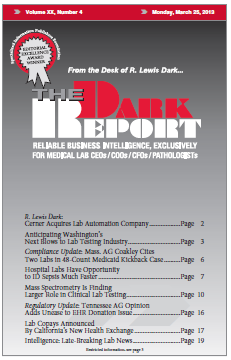CEO SUMMARY: In the Northeast, the microbiology department of a four-hospital health system adopted new technology for testing patients suspected of sepsis. Not only did this microbiology lab shorten the time-to-detection, it increased the diagnosis rate for sepsis from 9% to 15%—an improvement in detection of 67%! This effort led to shorter patient stays, improved …
Labs Have Opportunity to ID Sepsis Much Faster Read More »
To access this post, you must purchase The Dark Report.


